Mr. Earl C. Walker was born about 1894 in Louisiana. He married his wife, Luciellle, who was originally from Illinois, in 1916 at the age of 21. She was 20 years old. Their first daughter, Earline, was born in 1920. By the 1930 Census they would have three more sons: Edmond in 1923, Howard in 1925, and Richard in 1927.
This interview was probably conducted in the late-1970’s. This is not a transcript but a summary of the recorded interview between Mrs. Reeves and Mr. Walker. With some imagination, we can place ourselves back at the table where these two were talking about days long passed. As we read, the shifts between topics can be abrupt with no connection. Others are natural shifts. I left these shifts in tact to keep the "interview response feel" of the conversation. I did, however, edit for context and continuity within paragraphs.
The shifts between topics shows a man reflecting, digging for memories and reporting them as they come to him in a stream of consciousness, and a historian listening to the tape and writing what she hears in her own words. Her objective was to get him talking and later draw on her notes to create her story. What we have here are her notes of a man of his time describing how he and others lived in the beginning of the 20th Century in Hathaway, Louisiana.
Mr. Walker moved to Hathaway when he was a child because his father was employed to manage the U.S. Phillips Plantation (Section 16 –where Hathaway High School is located--U.S. Phillips owned stock in the same company as George Hathaway--research is needed to determine if Phillips sold the Section 16 land to George Hathaway). Initially they lived in the Guy Havenar home. After the first year though, they moved into a boarding house. Living in the boarding house got to be pretty costly, so they traded land they owned in Jennings for 80 acres at Hathaway.
The boarding house was used for the workers whose job it was to make the canals and run the engines at the pumping plants. There was a large barn and corral to house the mules. Oil had to be hauled for the engines. The first plants were built entirely of wood and used what were called box pumps. The first engines were also fired with wood. Steam engines with oil burners were put in about 1904. Mr. Walker’s father also worked on the railroad bed.
Mr. Walker’s father and Jim Sol bought 96 acres of woodland and Edgar Fruge sawed the lumber for half. Each of the men built a barn and a warehouse. Other sawmills were in the woods north of Hathaway. Mr. Walker recalls Beeman sawmill bought by Brooks in 1907. Mr. Walker recalls hauling lumber from the mill when he was just big enough to drive a team. He knows the sawmill had been there for a long time before. Edgar Fruge sawed lumber at different places in the woods before moving the mill out to the road (near the intersection of Highway 102 and Panchoville Road).
Mr. Walker recalls that Miss Kathy Eckle, a teacher at Nubbin Ridge School rode a small grey pony side-saddle. She was able to stand beside her pony and with one jump sit in the saddle. The school was named Nubbin Ridge because the corn planted there produced only nubbins (small or imperfect ears of corn).
Boniface Frederic also taught at Nubbin Ridge. His pupils were known for their penmanship. Later in life, Mr. Walker often worked the voting polls and could tell by the way some people wrote that Mr. Frederic had taught them to sign their names.
John Simon homesteaded just north of where Mr. Walker now lives (across from the northeast corner of Hathaway High School). Telesphare Gary homesteaded up on the corner. Camille Gary (then at the time of the interview—Lonnie Hicks) homesteaded that and across the road (on Joe B. Landry’s side—then at the time of the interview—Fultons) his wife had a tree claim. The Gary’s had come from Midland or Esterwood.
A ferry crossing called Viterbeaux was where the bridge across Nezpique is now (at Theo Road). Mr. Hebert had a store across the bayou.
Mr. Walker recalls the first log cabin he saw. His father had some land south of Roanoke and in traveling there one day, the horse pulling the buggy became frightened and ran off when a stick his father used for a whip caught in the buggy wheels making a most unusual noise. In looking for the runaway horse the next day they came to a log cabin that was owned by a Mr. Bageaux. He said the one room cabin had a bed in each corner with the whitest beds he’s ever seen! The cabin also had a dirt fireplace where coffee was made and served. The dirt floor was as smooth and clean as a floor in a modern home.
In traveling from Roanoke to Hathaway, the trails crossed the open prairie and often darkness overtook them before they reached home. Often a quart jar was filled with lighting bugs and carried by a man leading the oxen over the best path.
The dance hall at Panchoville was run by Charles Fruge and at one time he also had a hall on the southeastern corner of Highway 102 and Panchoville Road. This was where Mr. Walker’s parent lived at that time. One morning his father woke them and said the dance hall on the opposite corner was on fire. Evidently there were living quarters in the hall and when the door was pulled open the building literally exploded, knocking Mr. Walker down At that time of year, rice had been stored there and for the extent of the fire very little rice was lost. The owners were not at home.
In the years when he was the owner of the first car in Hathaway it became his lot to go for and return the priest to town when any wedding in the community was held. So he witnessed a great many of the marriages.
He tells of the priest, Father Pitre, offering him wine from three different bottles before he found one he could even swallow and afterward the priest always remembered him with that type wine. Mass was held at Camille Gary’s home.
Mention was made of the Raymond baseball team when Mr. Walker was trying to recall some names of former residents.
In the early days the roads were trails. The main trail through Hathaway came from the corner where Highway 102 and Panchoville Road is now across to the relift and across to Nubbin Ridge, following the highest land to reach their destination. Most people walked.
When asked what he knew of the Carter family, he recalled marking sacks at harvest time. Mr. Walker worked for the canal to check the farmers water rent from the crops by setting aside bags of rice at an agreed number to pay the rent. This elderly Mr. Carter was an artist with the marking brush—some sort of lamp black mixture used for marking). Mr. Walker says he learned to make the Grand Canal Co. mark without lifting the brush and in very precise letters, so that it was easily recognized that those sacks of rice had been his marking.
The letters GCCO with the line swing back under to provide a place for the numbers on the water contracts for the farmers had signed, provided a record to check payment and define ownership. Most farmers marked their own rice sacks with their intials.
When asked why he supposed a map shown to him had a field marked in sections, he said it was the custom to fence a small area to plant rice on. The rice was sown by hand and to insure a good stand cattle were driven into and around until the rice was mixed with the soil. The field was in a low place so that some water could be on the field to grow the rice. This was called providence rice.
The prairie had a number of cattle that were existing on their own by grazing. There may have been a few branded herds. Those people who needed fresh meat though would ride out on the prairie at night, kill and butcher the animal. Of course there was always the possibility the killed animal might be claimed by some cattleman. The herds were bedded down at night and did not have to be chased. Often part of the meat was sold in town and the fresh meat was ready to peddle door to door very early in the morning. Otherwise the meat would have had to been kept overnight and with no way to keep it fresh.
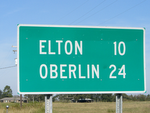
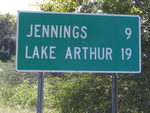
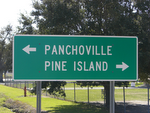
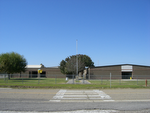
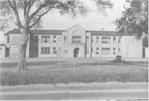
1 comment:
Dear Hornet,
These are priceless stories!! I grew up and graduated in Hathaway.
My family was a cornerstone of the community and we had very close connections to Mr.Earl Walker. If you would like to contact me, I would be happy to introduce you to some living historians, my family. They grew up in Hathaway in the 40 & 50's and raised their families, myself, there also.
"Hathaway a community with Heart"
Post a Comment